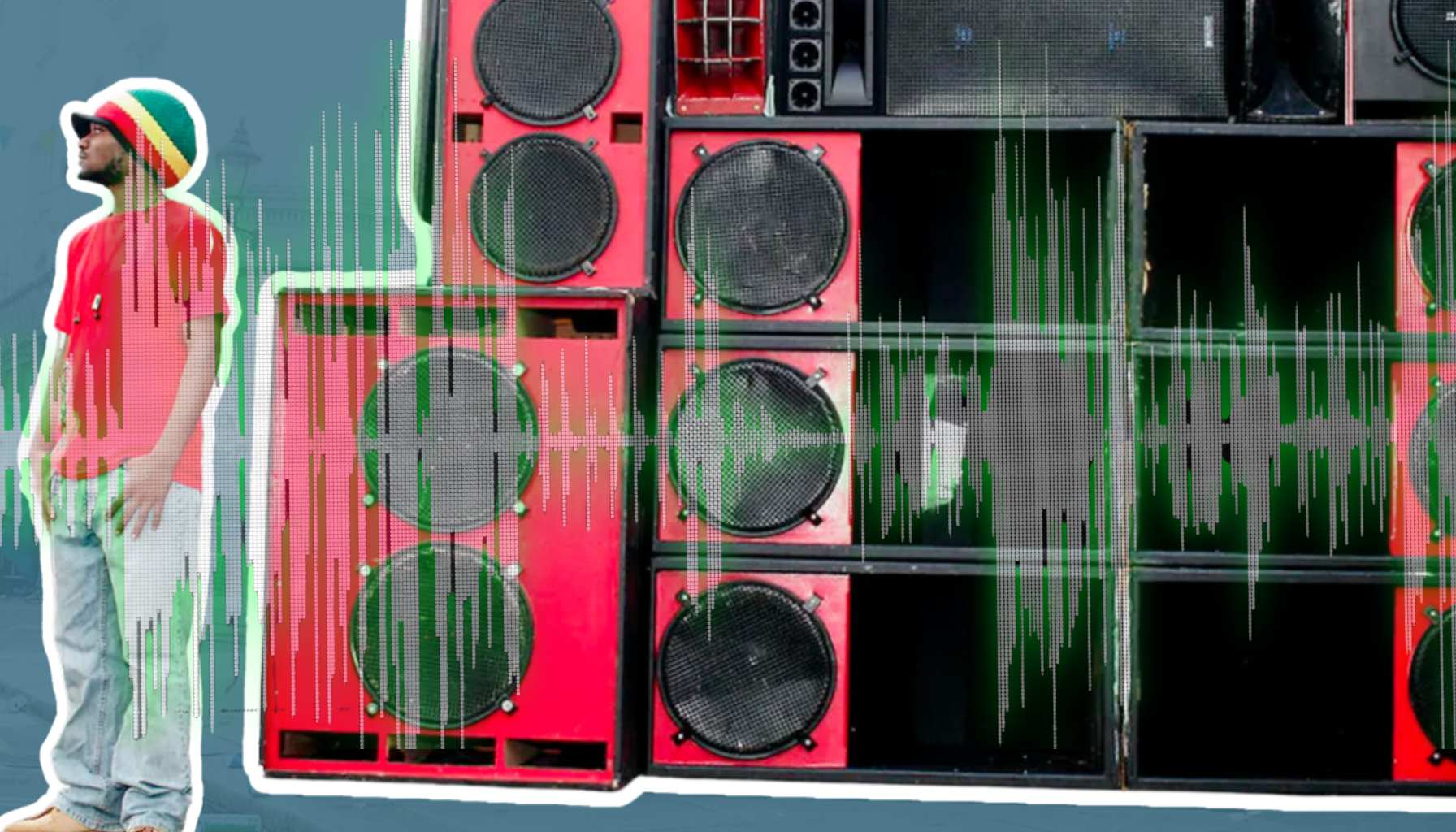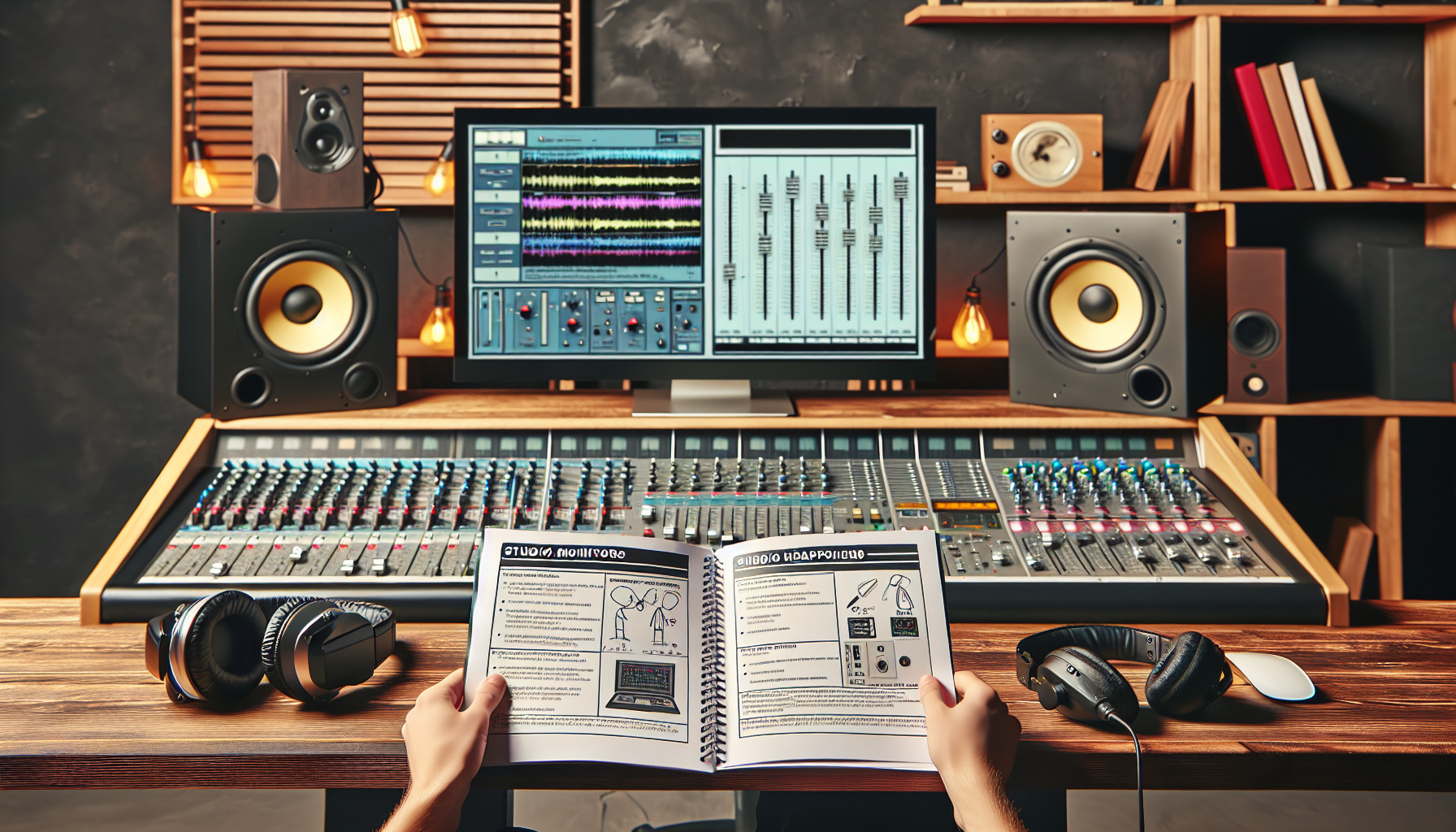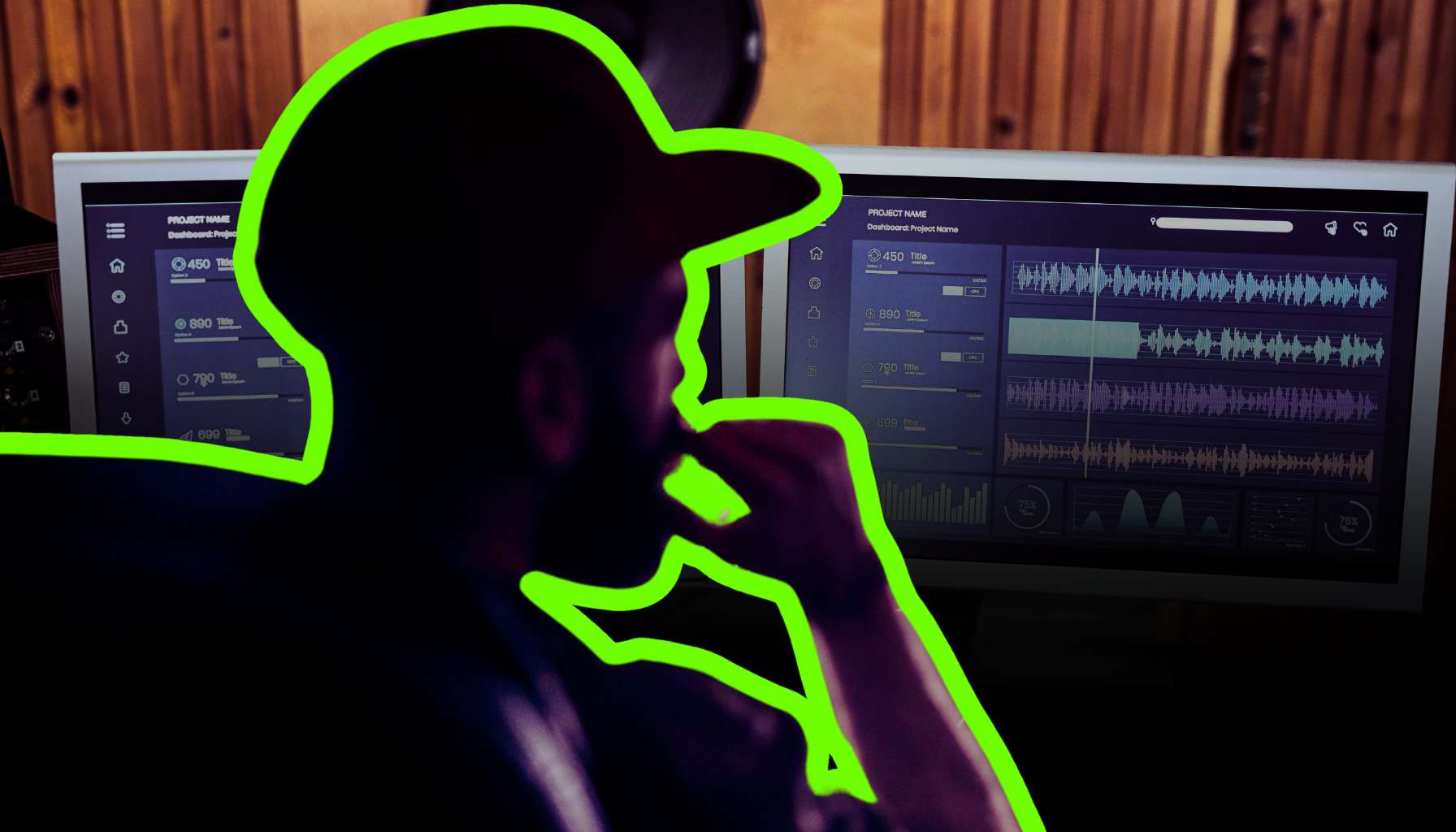Understanding Dynamic Range in Audio Production
Welcome to the riveting world of dynamic range, a realm where the whispers and the roars of your music find their rightful place. As we segue from exploring the nuances of mastering and overall loudness into the intricate dances of dynamic range, let’s unravel the threads that hold our auditory tapestry together.
The Basics of Dynamic Range
Dynamic range, the contrast between the softest and loudest moments of a track, isn’t just a technical aspect—it’s the soul of your sound. Imagine walking through an art gallery; dynamic range is what allows you to whisper in awe at the sketches and gasp at the grandiose paintings. It’s pivotal in how we experience music, providing emotional swells and intimate breaths that whirl us through different feelings and stories.
Definition and Importance of Dynamic Range in Music
In our audio odyssey, understanding dynamic range is not only about recognizing the distance between a pin drop and a thunderclap but also understanding its musical import. It’s that crucial ingredient that can turn a flat serving of sounds into a three-dimensional sonic feast, sculpting spaces within which each note can resonate.
How Dynamic Range Impacts the Listening Experience
Just as seasoning affects a dish’s taste, dynamic range flavors our listening experience. It carries the listener through a labyrinth of anticipation and relief, of tension and release—turning the act of listening into an interactive journey rather than a mere auditory process.
Factors Affecting Dynamic Range
Dynamic range doesn’t ride solo; it’s impacted by various elements buzzing beneath the sound waves. From the intimate touch of a guitarist’s strum to the abrasive wail of a subway train—recording techniques contribute significantly to the dynamic texture of your tracks.
And let us not overlook the role of playback equipment and media formats in this symphony—as much as we love our vintage cassettes, it’s tough to deny the superior dynamic capabilities of digital formats.
The Role of Recording Techniques
To capture sound with the finesse of a seasoned sushi chef requires recording techniques that champion a delicacy of touch. The nuanced use of mic placement, gain structure, and room acoustics decide whether your recordings are a flat pancake or a fluffy soufflé.
Equipment and Media Formats
Media formats have an intimate tango with dynamic range. Vinyl enthusiasts may preach about the warmth of their discs, but digital formats herald a wider dynamic pasture for audio to frolic in.
And in the battle of equipment, it’s a balancing act between staying true to vintage charm and harnessing the clarity of modern tech. As we’ve gazed into the dynamic void and felt its pulsing heart, prepare to dive a little deeper into the nitty-gritty—a mysterious force known as compression.
Donning our swim caps and goggles, we’ll plunge into understanding this pivotal technique in audio production that wrangles wild dynamics, ensuring they play nicely within the confines of our sonic playground. So, keep those faders agile and your ears perked; the journey into audio’s pressure cooker is about to begin.
Fundamentals of Compression
After ironing out the dynamic range’s role within the sonic landscape, the next key player steps into the spotlight: compression, the enigmatic tool in the audio toolbox. What is this wizardry that tames peaks and props up valleys in our audio tracks? Let’s unravel the mystery shrouding this pivotal process and unlock the powerhouses known as compressors.
What is Compression?
Picture compression as a vigilant audio guardian: not exactly Batman, but the effect might make you feel like a production cape crusader. When whispers threaten to disappear and shouts risk blowing out the speakers, compression swoops in to even things out.
The Theory Behind Audio Compression
In plain speak, audio compression reduces the volume of loud sounds or amplifies quiet sounds by narrowing or ‘compressing’ an audio signal’s dynamic range. Genius, isn’t it? By harnessing this, producers can prevent distortion, manage inconsistencies, and craft a mix that holds the listener like a captivating story.
Different Types of Compressors and Their Characteristics
Choosing a compressor can feel like speed dating: VCA, Optical, FET, and Tube each bringing unique flair to the relationship. Some, like Optical compressors, offer a gentle, musical compression, excellent for vocals or bass. In contrast, FET compressors approach with a fast attack, perfect for drums, and VCA compressors? They’re your versatile companions, able to handle almost anything you throw at them.
Core Parameters of Compression
If compressors are the knights, consider these parameters their round table. We have Threshold, the level above which compression starts saying ‘easy there, tiger.’ Ratio decides how much compression is applied once the signal exceeds the threshold—think of it as deciding how sternly to say ‘no’ to over-eager volume spikes.
Threshold, Ratio, Attack, Release, Knee, and Make-up Gain
Then there’s Attack and Release, the dynamic duo managing how quickly compression kicks in and fades out. Too fast, and you’re squishing the life out of your sounds—too slow, and they’ll slip by unnoticed.
Knee adjusts the compressor’s response curve, smoothing the transition into compression territory. Last but not least, Make-up Gain steps in after the battle to lift your audio back to its righteous level.
Visualizing Compression with Gain Reduction Metering
But how does one track the shadow movements of these compression parameters? Enter Gain Reduction Metering, painting a visual of compression’s impact in real-time, leaving no sneaky dB unaccounted for.
Transitioning smoothly to the next chapter, equipped with a newfound grasp of compression’s mechanics, we’re prepped for the excitement of practical application. Could those drums be punchier? Can the vocals cut through the mix like a hot knife through butter? The answers dwell within the realm of compression techniques.
So steady your hand on the fader, and let’s dive into the practical side of dynamic contouring where creativity meets control. From single-band application to multi-stage deployment, the journey through compression is far from over. As we twiddle the knobs and listen intently, we’re not just making music—we’re molding experiences, one compression curve at a time. Prepare to roll up your sleeves; the art of using these tools in real-world settings awaits!
Practical Compression Techniques
Caught between the rock and a hard place of maximizing punch yet maintaining naturalness? Compression, my friend, is your sonic sledgehammer and feather pillow all in one. It’s the quiet guardian of dynamics, the watchful protector of peaks.
Teetering on the precipice of over-compression is like playing musical Jenga – one wrong move and your mix could topple over. But, wield compression like the mighty Thor wields Mjolnir, and you’ll be the god of thunderous, yet articulate soundscapes.
Single-Band Compression Applications
When it comes to reigning in those wild vocal dynamics or giving your drum tracks the oomph of a superhero landing, single-band compression is the trusty steed you ride into battle.
Controlling Vocal Dynamics
Utilizing a compressor to smooth out your singer’s impassioned performance ensures listeners won’t have to ride the volume knob like a bucking bronco. Set the threshold cautiously to catch the peaks without suffocating the life out of the performance. Remember, unless you’re seeking a special effect, the compressor should be felt, not heard.
Achieving Punch and Clarity in Drum Tracks
Want your kick to cut through like it’s got a vendetta against silence itself? A snappy attack setting allows the initial transient to sneak through before clamping down like a bear trap, giving you that coveted ‘punch’.
And with a threshold that engages just as the drummer hits full pelt, you’ll have clarity that could rival a mountaintop epiphany.
Multiband Compression and Dynamic EQ
Ah, multiband compression, the surgical scalpel of the audio world, slicing up the frequency spectrum with the precision of a master chef.
Addressing Frequency-specific Dynamics
When one rogue frequency band is stepping out of line like it’s got a solo career in mind, that’s when you call in the multiband compressors. Think of each band as a tightly roped off VIP section in the club of your mix, each getting its own bouncer – the compressor – to keep the energy levels in check.
Advanced Techniques for a Balanced Mix
Multiband compression can be a mix’s best friend or worst frenemy—it’s all in how you handle it. Tweak the knobs with purpose. Know the why, the when, and the how much. Getting too handsy can leave your mix sounding like it’s been on a diet of nothing but lemons—sour-faced and puckered.
As you’ve donned the cloak of compression wisdom, it’s time to move into the realm of artistry. The mundane use of compression morphs into creative fun in the next section, infusing energy, vibe, and that sprinkle of studio magic into your mix.
There, you’ll find that these technical tools don’t just shepherd dynamics—they dance with them, color them, and sometimes, make them jump through flaming hoops for the sheer entertainment of your listeners’ ears.
Stay tuned as compression snuggles up with creativity, and get ready to spice up your sonic stew to Michelin-star standards. Whether it’s breathing life into a flat mix or engineering a soundscape that rivals fantasy fiction, your saga continues with the alchemy of audio that lies just beyond the scope of normality, in the wizarding world of compression as an artistic tool.
Creative Uses of Compression
After taming the dynamic beasts of single-band compression and sculpting soundscapes with multiband and dynamic EQ, we enter the realm where compression isn’t just about control—it’s about creation.
Bending the rules can transform the staid dispatcher of peaks and troughs into a muse that inspires movement, energy, and color in your mixes. Let’s peel back the layers of traditional compression to reveal its alter ego: a tool for artistic expression.
Compression as an Artistic Tool
Imagine compression as a potter’s hands, expertly shaping the clay. Used with a certain panache, it can craft grooves that breathe life into lifeless tracks. Rhythmic pumping effects, a hallmark of dance music, serve as a testament to the compressor’s artistic license. The secret sauce?
Adjusting the compressor’s attack and release to the tempo of the track, injecting a pulsating heartbeat that compels bodies to move with every beat. Coloration and timbral shaping open another door.
Not all compressors wear a surgical glove—some, like the analog warmth of tube or opto units, imbue the audio with rich harmonics and subtle distortions that can sweeten a sterile digital mix like a dollop of honey in tea. This is the kind of coloration that makes seasoned engineers wax poetic about their favorite gear.
Sidechain Compression Techniques
In a mix where the bass and kick drum are battling for dominance like gladiators in an arena, sidechain compression is the emperor that gives the solemn thumbs up or down.
By keying the compressor to react to the kick drum, you can carve out a space for it to punch through, allowing the bass to momentarily duck out of sight. This technique goes beyond practicality; it’s like staging a choreographed dance between sound elements, creating an illusion of space in the digital canvas.
Achieving Rhythmic Pumping Effects
The fluttering heartbeat effect—it’s not just the preserve of four-to-the-floor anthems; it spills its magic into the lo-fi, the moody, and the atmospheric. By sidechaining pads, synths, or even reverb tails to a rhythmic element, you create anticipation between the beats.
This subtractive nuance can be as hypnotic as the flickering of a vintage film projector—it’s the gaps between the frames that pull you into the story.
Making Space for Competing Elements in a Mix
There’s an art to ensuring each component in your mix respects the others’ personal space—too much elbowing leads to a brawl of frequencies. Sidechain compression offers diplomatic negotiations, subtly nudging competing elements to step aside, letting each other breathe.
You can use this to let a vocal soar over a dense mix or ensure a snare crackles through layers of guitars—sidechain is the mix whisperer. As we twist the knobs and listen to the compressor paint, we realize that this processor is more than just a janitor cleaning up dynamics—it’s an artist shaping the pulse and flow of the music.
With this fresh perspective, we edge closer to understanding how these dynamics spill over into different stages of production. In the next segment, we transition from the painter’s studio to the builder’s workshop.
We’ll tangle with the practicalities of whether to squash signals into submission while tracking or coax them into conformity during mixing. Are you ready to navigate the thickets of compression in the wild? Stay tuned as we explore the compression in different mix stages, and remember—sometimes it’s the hammer, not the nail, that makes the biggest impact.
Compression in Different Mix Stages
After dissecting the multicolored innards of compression—that secret audio sauce which flavors everything from salt-of-the-earth folk to gotta-get-up-and-dance disco—it’s clear that knowing when to wield this mighty tool is just as critical as knowing how.
We’re past the basics, folks; we’re in the thick of it now, navigating the nuanced terrain of mix stages like a sonic Indiana Jones.
Tracking and Recording with Compression
Ah, tracking—the act of capturing sound waves like some magical butterfly net. Here’s where your relationship with compression starts. Do you press record with or without it? Whisper it like a secret or shout it from the rooftops?
Applying compression while tracking can be like adding a pinch of salt while cooking—it brings out the flavors without overpowering the dish. For vocal takes that can swing from a soft croon to a spirited howl faster than a caffeinated jackrabbit, a gentle touch of compression can feel like adding safety rails on a high-speed turn.
It’s the difference between a heart-stopping plummet and a moment where everyone holds their breath before cheering at the smooth ride. Yet, there’s a thin line between helpful and harmful. The throughline?
Caution. Using too much compression is like tightening a necktie until you can’t breathe—it might keep things in place, but at what cost? Keep those settings conservative, or risk a performance squashed flatter than a pancake in an industrial press.
The Role of Compression in Mixing
Mixing, the grand stage where all elements come together, hoping to play nice. Your kick drum wants to be noticed, but the bass is hogging the limelight; here’s where compression plays the role of a diplomatic mediator. Its mission: ‘glueing the mix together’ with finesse and a deft touch.
The trick is not to overdo it—you’re aiming for a masterpiece, not a paint-by-numbers. Different musical genres call for varied compression treatments; a jazz ensemble values dynamics like a cat values its independence, while electronic dance music often needs those peaks tamed like a lion in a circus—still powerful, but more predictable.
Every genre has its sound signature, so compress with your ears, not your habits. As we pivot towards mastering, remember that subtlety is king. Each track is a speech, and compression is the inflection in your voice—emphasis in the right moments can inspire; too much can become a dreary drone.
How we juggle loudness and tasteful dynamics without sounding like we’ve sold our souls to the decibel devil is our next act. The mastering stage awaits with its own set of conundrums—stay tuned to conquer it together. Greatness in music production, much like great coffee, depends not only on the quality of the beans but also on the skill of the barista.And as you’ve learned, compression is the barista of the audio world, a steward of intensity and smoothness.
As we step into the world of mastering, think of it as the last pass over the espresso—a final check to ensure that when the music hits the airwaves, it’s got all the punch, clarity, and spirit that stirs the soul, without the bitterness of depletion or the scald of over-extraction.
Mastering and Overall Loudness
As we tango with the dials of dynamic range, we must now pirouette into the grand ballroom of mastering and overall loudness—a place where the dance of decibels often turns into a gritty battleground, known as the Loudness War. But fear not, as we strategize to make our music not just sound louder, but maintain its dynamic decorum, too.
The Loudness War and Its Impact on Dynamic Range
The term “Loudness War” might conjure images of an audio apocalypse, but it’s really about the pursuit of making music as full and loud as possible, often at the expense of dynamic range.
This aural arms race peaked (no pun intended) in the ’90s and 2000s, as producers employed heavy compression and limiting to pump up the volume, often squeezing the life out of the music.
Yet, like a wave receding after a storm, the industry is slowly finding a balance between loudness and the dance of light and shade that dynamics bring to a track.
Compression in Mastering
Mastering is the final dusting of fairy dust on your track, a process that often teeters on tightrope finesse. Preserving the natural ebb and flow of a track while still making it loud enough to stand up against its competitors is akin to a magician’s act—subtle, yet powerful.
The use of multistage compression strategies and limiting in mastering aims to uphold the integrity of the music, while giving it the “oomph” to rock the airwaves. Now, as we put down our compression tools and look past the Loudness War’s battlefield, we notice a new dawn, one where sophistication and subtlety begin to matter again.
With streaming platforms implementing normalization standards, the loudness frenzy has simmered down, allowing dynamic range to peek out from its trench and into the sunlight. As we prepare to march forward, eyes gleaming with newfound wisdom, the world of advanced dynamics control techniques awaits.
We will explore the secrets of New York compression and learn to finesse the faders with automation over compression. It’s all in the noble pursuit of making the music we love not only louder but livelier and more expressive.
Advanced Dynamics Control Techniques
If dynamic range is the canvas of audio production, the tools and techniques at our disposal are the brushes with which we paint intricate sonic landscapes.
As we plunge deeper beyond the basics of compression and into the avant-garde universe of dynamic control, let’s explore the masterstrokes that give your mixes depth, character, and clarity without sacrificing the ethereal essence of dynamics.
Parallel Compression for Depth and Detail
There’s compression, and then there’s parallel compression—it’s like having your cake and eating it too. Also fondly termed ‘New York Compression,’ this technique is the audio world’s open secret for achieving punchy, upfront sounds while retaining the natural dynamics of the source.
By blending the dry, untouched signal with a heavily compressed version, you summon detail and power to the mix without evoking the wrath of the dynamics gods. Implementing effective parallel compression is part science, part art.
Begin with setting up a send effect, dial in a high compression ratio, and squash that signal like it’s a rebellious uprising. Now, bring in this compressed signal underneath the original like a stealthy ninja—just to the point where it gives the track that extra oomph without overshadowing the natural performance.
Automation over Compression
Sometimes, it’s not about how much compression you use, but where and when you use it. Picture automation as the skilled sculptor’s chisel, chipping away at volume peaks and troughs with surgical precision.
Using automation enables the sound to breathe organically in the mix, with the added benefit of keeping your dynamic range intact. The blend of automation and compression is akin to pairing a fine wine with a gourmet meal—it’s about balance and enhancing qualities without overwhelming the palate.
Start by automating significant volume discrepancies, then apply light compression to polish off the edges. It’s not cheating; it’s complementing, like a spice that brings out the best in a dish.
















